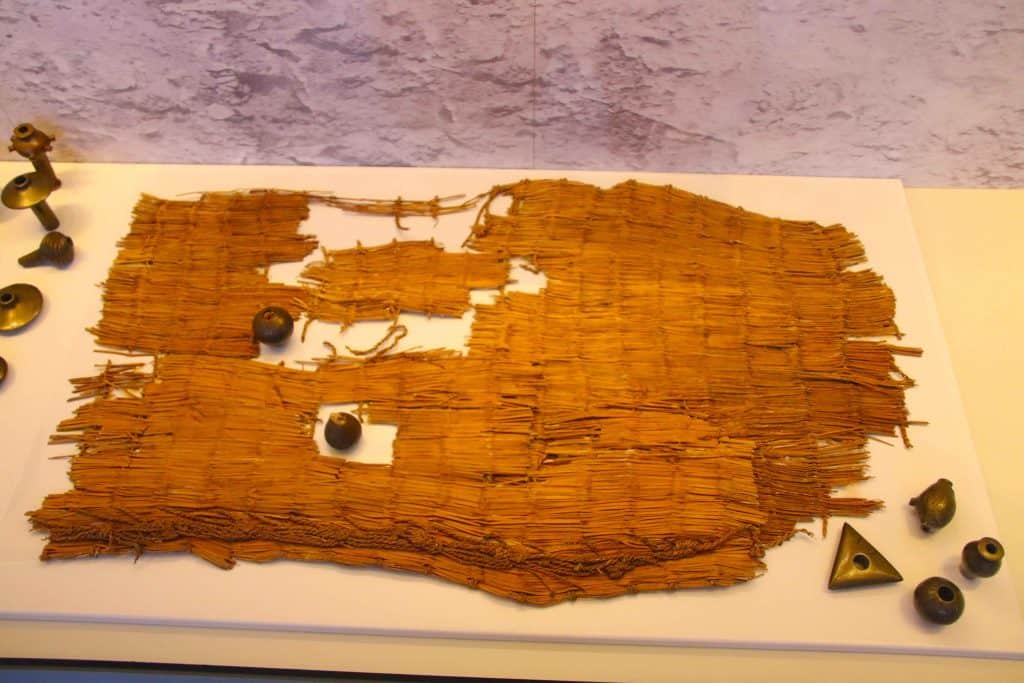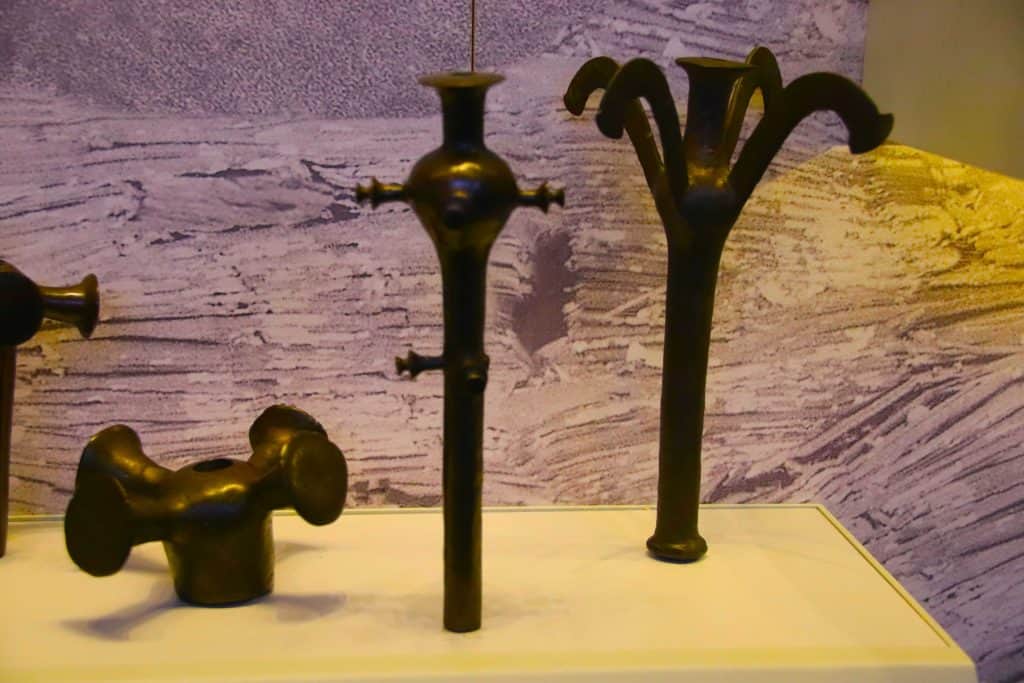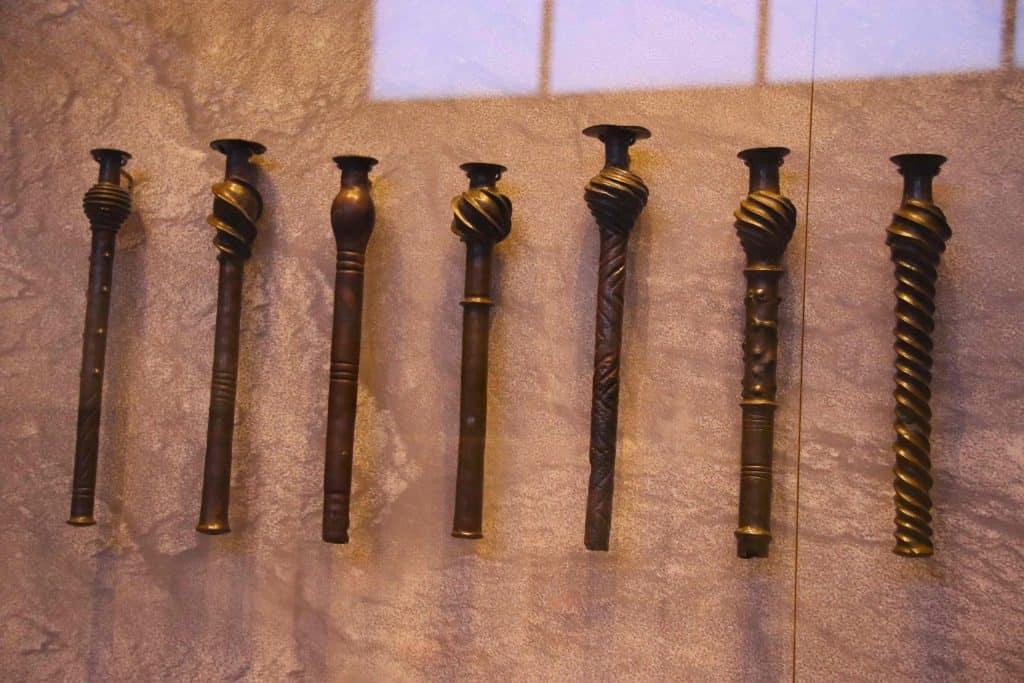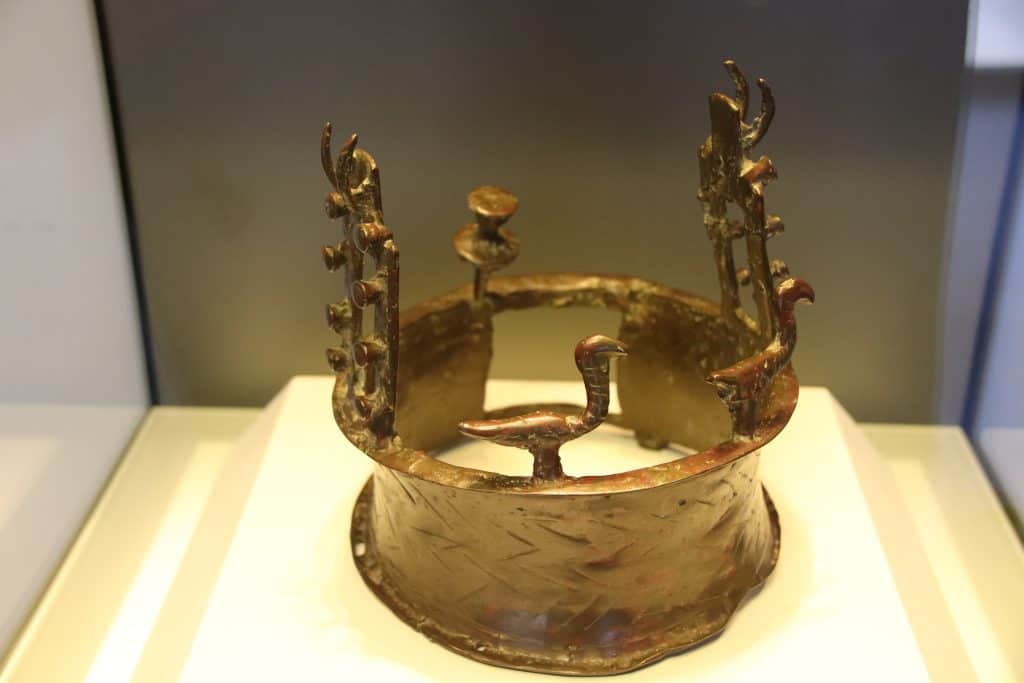The Nahal Mishmar treasure was found in 1961 as part of a search for more Dead Sea Scrolls that were found a decade earlier. Following the discovery of the Dead Sea scrolls, many archaeological expeditions went to the Judean Desert and oh boy what a surprise was waiting for them!

More About Nahal Mishmar Treasure
An astonishing hoard of 429 ritual objects was discovered in 1961 in a remote cave above Nahal Mishmar in the Judean Desert. The objects were wrapped in a woven mat and concealed behind a large stone. They included hundreds of mace heads; dozens of scepters; and several mysterious objects, such as the “crowns.” Most of the objects were made of copper, with a few made of ivory or stone.

It is possible that this spectacular treasure belonged to the Sanctuary at Ein Gedi, only 12 km away. It seems that some approaching danger led the priests to stow away the precious objects hoping for better days. The findings were dated using the carbon-14 dating method; the mat in which the findings were wrapped was used as the organic substrate for testing. The results showed that the objects can be dated to approximately 4300 BCE.
Origin of the Hoard
The objects of the hoard seem to be collected in a rush. There are several theories about the origin of the hoard: First, archaeologist David Ussishkin has suggested the hoard may have been the cultic furniture of the abandoned Chalcolithic Temple of Ein Gedi, about 7 miles from the site. Yosef Garfinkel stated that no proof had been provided for the connection of the hoard with the temple.

Furthermore, he suggested that this was a burial of cult objects to prevent desecration, drawing parallels with the Nahal Hemar Cave’s finding. Yet another view belongs to Miriam Tadmor. She suggests that it was a kind of merchants’ warehouse, judging from the number of mundane objects, tools, and raw materials. It was also suggested that a possible alternate source of the hoard could have been another cultic location, at the place of some fragmentary ruins near the cave.

On the hand, other scholars in the field stated that no proof has been provided for the connection of the hoard with the temple and suggested that this was a burial of cult objects to prevent their desecration, drawing a parallel with the find in the Nahal Hemar Cave. Last we have Miriam Tadmor, who suggests that it was a kind of merchants’ warehouse, judging from the number of mundane objects, tools, and raw materials. It was also suggested that a possible alternate source of the hoard could have been another cultic location, at the place of some fragmentary ruins near the cave. By the way, today, you can find them at the Israel Museum in Jerusalem.

